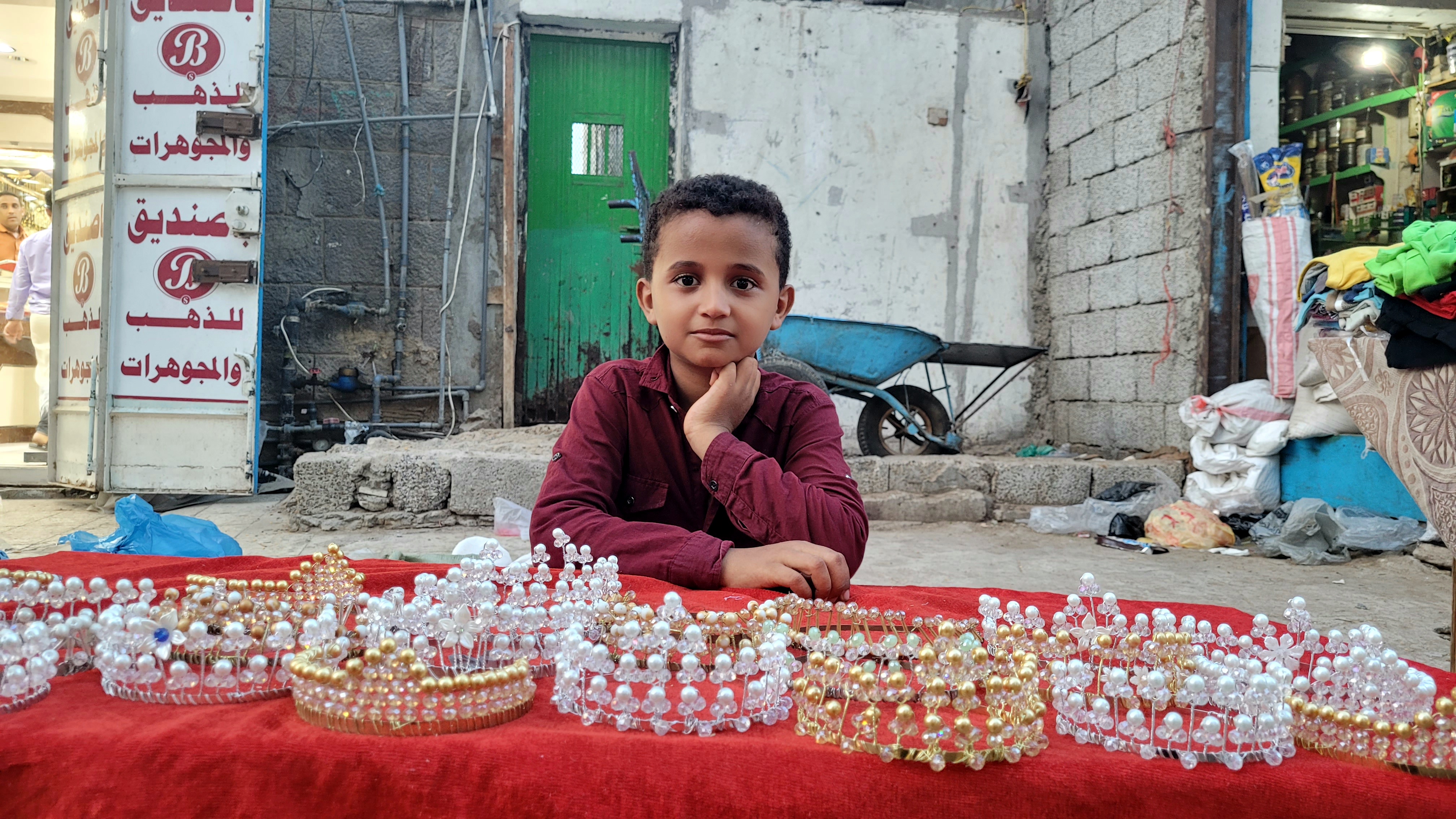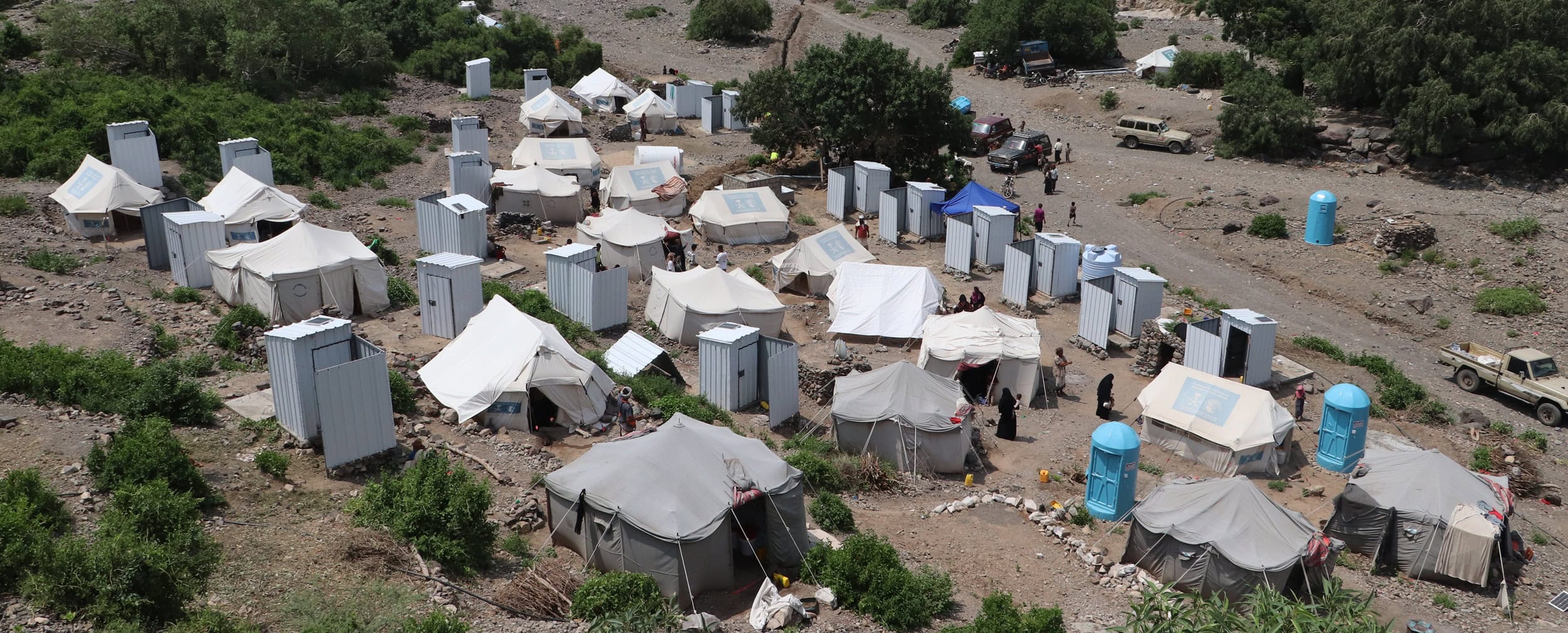
Child labor in Aden, July 2022 (South24 Center)
آخر تحديث في: 06-06-2024 الساعة 8 مساءً بتوقيت عدن
Practices of child labor in war zones are not only linked to the warring parties. Rather, they can also be practiced by families as a harmful coping mechanism to deal with the poverty.
Dr. Marta Furlan (South24)
In conflict-affected areas, human casualties and material destruction are amongst the direct, most evident impacts of war. However, armed conflicts also have other indirect, less obvious, yet extremely harmful impacts. One such indirect impact is child labor, defined by the International Labor Organization as “work that is mentally, physically, socially or morally dangerous and harmful to children and/or interferes with their schooling.”
Child labor in the Yemeni conflict
Unfortunately, yet unsurprisingly, war-torn Yemen is no exception and (too) many Yemeni children throughout the country are forced to engage in some form of work.
In 2013, when the last reliable statistics was released, 17% of Yemen’s children between the ages of 5 and 17 – 1.3 million in total – were found to be in child labor. Today – as the conflict is in its tenth year, more than 2 million children are out of school, and more than 80% of the people live in multidimensional poverty – the number of children in labor is likely to be much higher.
The most observed forms of child labor in Yemen include:
- Street selling and market selling: In the streets and in the markets of Yemen’s main cities, children are seen selling products such as qat, vegetables, bottled water, and beauty items. Some of them are pushed into selling by their desperate families, others (especially if alone) are recruited and forced into selling by unrelated adults. In other cases, lone children living in the streets with no one to take care of them, collect what they found around (such as metals) and try to sell their “merchandise” to passersby.
- Car washing: Alongside children selling goods, the streets of Yemen’s cities are also bustling with children approaching cars with a bottle of water and a windshield cleaning tool, offering drivers to have their windows cleaned in exchange for a few rials.
- Agriculture: Throughout the country, children are forced to engage in the production of different crops (tomatoes, cucumbers, potatoes, qat…). As they engage in cultivation and harvest, children are exposed to pesticides, heavy agricultural machinery, physical stress, and long working hours. Here, girls as well as boys are employed.
- Mechanics, carpentry, and metal workshops: Male children in Yemen’s cities are often found working as mechanics in car repair shops or on the side of major roads and highways. Others are working as carpenters or as metal workers. Children working in these sectors typically handle dangerous equipment, are exposed to high temperatures, and run the risk of severe injuries.
- Soldiering: All sides in the Yemeni war have recruited children and used them in battle. However, the Houthis have been found to be the party most responsible for child soldiering. Once children are part of the Houthi fighting machine, they are required to engage in combat roles, lay mines, and guard checkpoints, armored vehicles, and buildings. In addition to that, children (including girls) are frequently used as porters, carrying ammunition and food to frontline fighters, as spies, cooks, and recruiters of other children. They also retrieve wounded and dead fighters and provide first aid.
The intersection between conflict and child labor
Far from being a phenomenon unique to the Yemeni conflict, the occurrence of child labor in contexts of war is well documented across different.
First, child labor may be used by the warring parties (and especially by armed groups) to exert control over communities, undermine trust in the government, and increase military power and social influence. This is especially the case with the recruitment of children as soldiers, which is considered one of the worst forms of child labor.
For example, al-Shabaab has abducted and forcibly recruited thousands of children to use them as child soldiers. In Colombia and Venezuela, ELN and FARC splinter groups recruit children to be full-time fighters who live in guerrilla camps and take part in combat, or to be militia members who live in urban areas and collect extortion payments, gather intelligence, and carry out small-scale violence. In Sri Lanka, the Liberation Tigers of Tamil Eelam (LTTE) also engaged in the extensive recruitment and use of children as soldiers.
At the same time, warring parties may be resorting to child labor in times of conflict as a revenue generating strategy, whereby they force or coerce children to work in economically productive activities. This has been the case under Boko Haram, which used children as beggars to finance the group’s operations. Colombian armed groups also resort to forced child labor, requiring children to work for free, farming, cleaning roads, or cooking in their camps. In Sierra Leone, children were recruited by armed groups and used to gather food and fish or to work on farms.
However, practices of child labor in war zones are not only linked to the warring parties. Rather, they can also be practiced by families as a harmful coping mechanism to deal with the poverty, insecurity, and uncertainty generated by the conflict. Affected by poverty, many families in times of war see themselves forced to push their children to work. This is especially the case in low-skilled, low-paid, and informal occupations where conditions are worst and the risk of exploitation highest. In the war-torn Democratic Republic of Congo, many parents have no other option but push their children to work, including in hazardous occupations such as gold and cobalt mining.
Finally, in areas of conflict, labor may become the only option available to children who are left to fend for themselves because they have remained orphaned or have been separated from their families by external circumstances.
Conclusion
At this time - and especially since the Houthis’ escalation in the Red Sea in the past half year - the prospects of a peace agreement being reached in Yemen are certainly not encouraging. As long as the Houthis’ confrontation with the Yemeni government continues and Yemen remains one of the worst humanitarian crises worldwide, it seems hard to imagine that the issue of child labor will be addressed and resolved any time soon.
However, steps that the government and international children’s rights organizations could – and should – be taking even in the absence of a peace agreement between the government and the Houthis include:
• Improve access to livelihoods including through making more funding available for income-generating activities;
• Invest more resources to provide quality, safe, and continuous education for all children;
• Prioritize ending the worst forms of child labour, making families aware of the risks and harms that are inherent in certain occupations;
• Invest in strengthening national and community-based child protection systems and services;
• Institute a rehabilitation and reintegration program for children engaged in armed conflict and children involved in other worst forms of child labor.
Research Program Officer at Free the Slaves (FTS), a non-governmental organization working to end human trafficking and modern slavery. She is also a Non-Resident Fellow at the Orion Policy Institute (OPI) and a Fellow at the Center on Armed Groups. (@MFurlanBuckl)

قبل 3 أشهر

قبل 3 أشهر